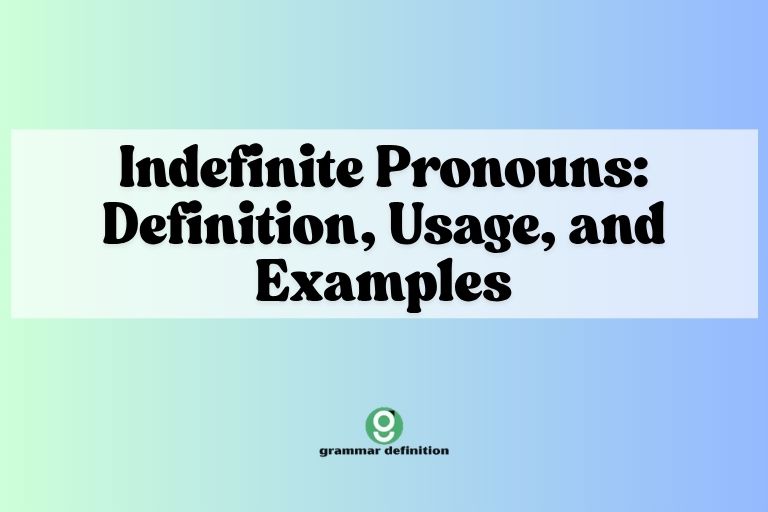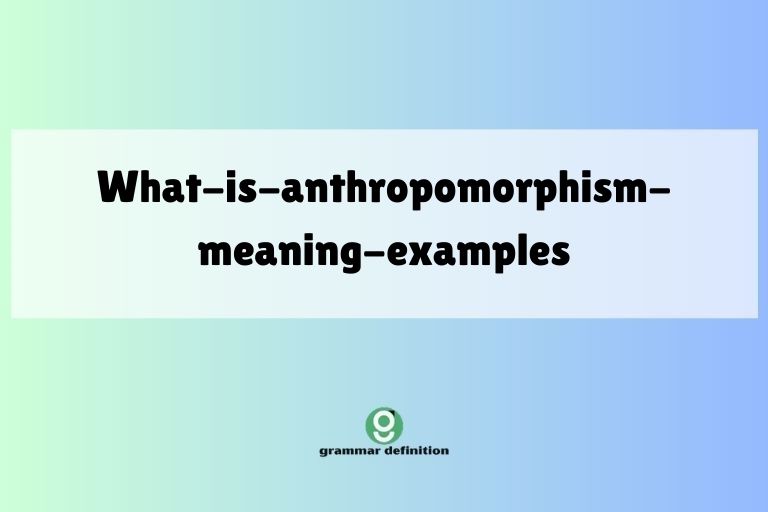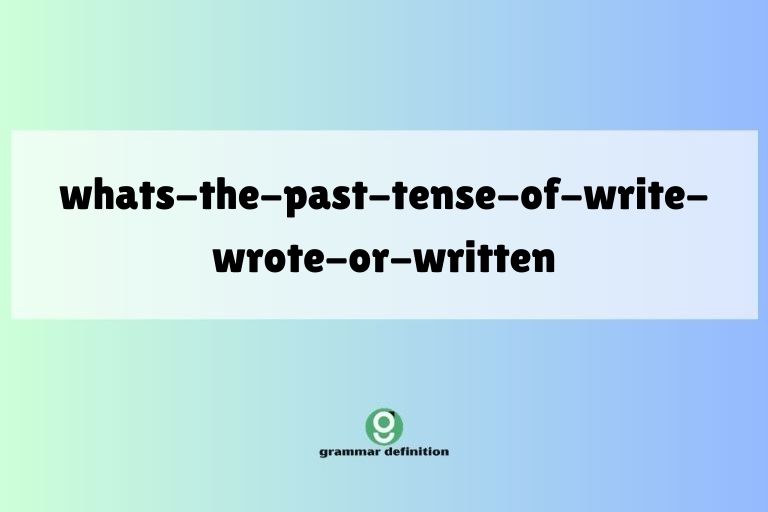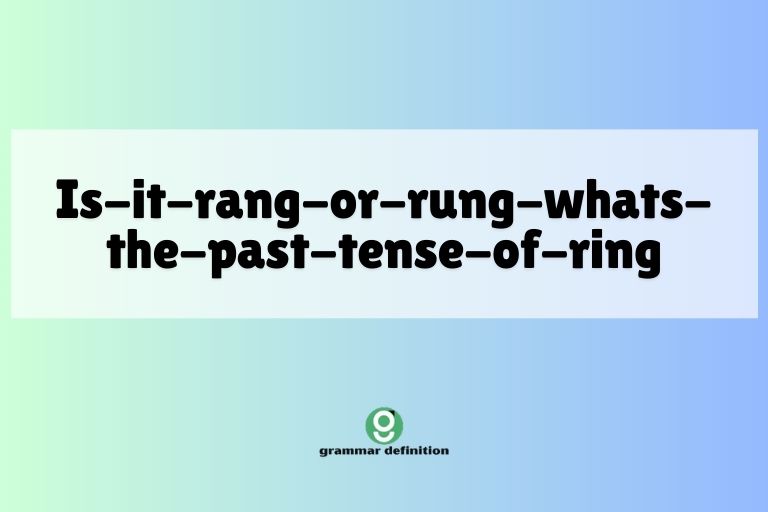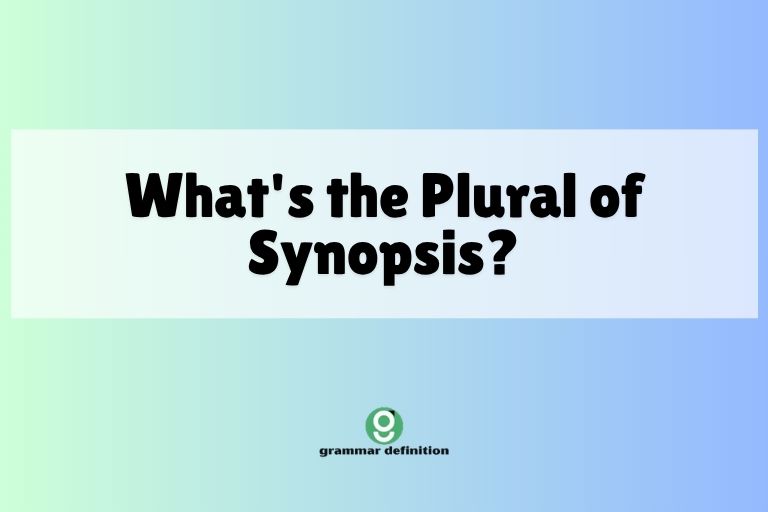What’s the Plural of Ellipsis? Mastering the Grammar
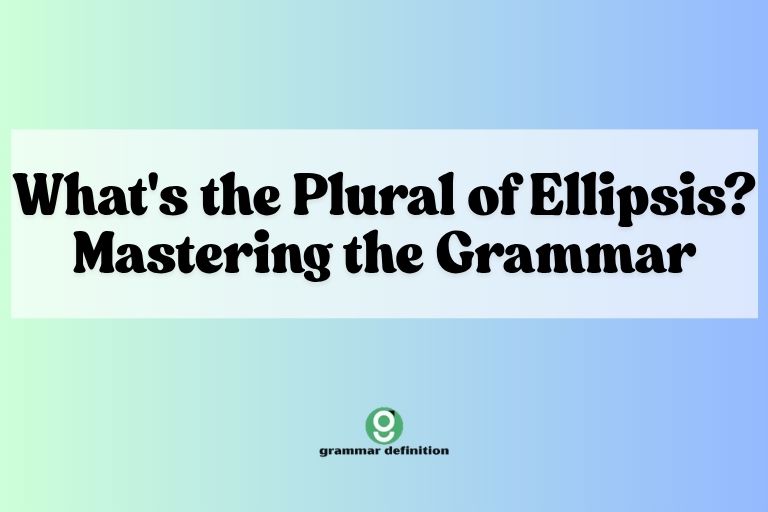
Understanding the plural of “ellipsis” is crucial for anyone aiming to write with precision and clarity. Ellipses are commonly used in both formal and informal writing to indicate omissions, pauses, or trailing thoughts.
Knowing how to correctly pluralize this term ensures that your writing remains grammatically sound and avoids potential misunderstandings. This article provides a comprehensive guide to the pluralization of “ellipsis,” covering its definition, usage rules, common mistakes, and practical exercises.
Whether you are a student, writer, or language enthusiast, this guide will equip you with the knowledge and confidence to use “ellipses” correctly in your writing.
This article breaks down the often confusing topic of pluralizing ellipsis, explaining the simple, yet sometimes misunderstood, concept. With detailed explanations, numerous examples, and practical exercises, this article is designed for English language learners of all levels.
By the end of this guide, you’ll understand not only the plural form but also how to use ellipses effectively in various contexts, adding nuance and sophistication to your written communication.
Table of Contents
- Introduction
- Definition of Ellipsis
- Structural Breakdown
- Types of Ellipsis
- Examples of Ellipses
- Usage Rules
- Common Mistakes
- Practice Exercises
- Advanced Topics
- FAQ
- Conclusion
Definition of Ellipsis
An ellipsis (plural: ellipses) is a punctuation mark consisting of three dots (…). According to the Chicago Manual of Style, these dots indicate an omission of words or a pause in speech. The ellipsis is used to signify missing words from a direct quotation, a trailing off of thought, or a stylistic pause. It is a powerful tool in writing that adds subtlety and can imply more than what is explicitly stated. The use of an ellipsis is highly context-dependent, and understanding its varied applications is important for effective communication.
Ellipses can appear at the beginning, middle, or end of a sentence, depending on where the omission occurs. They are commonly used in academic writing to shorten quotations, in creative writing to create suspense, and in informal writing to indicate hesitation or a thought trailing off.
Mastering the art of using ellipses can significantly enhance the flow and impact of your writing.
Classification
Ellipsis falls under the category of punctuation marks and is specifically classified as an omission mark. Its primary function is to indicate that something has been left out of a text, whether it’s a word, phrase, sentence, or even an entire paragraph.
This omission can be intentional, serving a purpose such as shortening a quote or suggesting a pause.
Function
The main function of an ellipsis is to create a sense of incompleteness or suggest that there is more to the story than what is being explicitly stated. It can indicate hesitation, uncertainty, or a trailing thought.
In academic writing, it’s used to condense quotations while maintaining their original meaning. In creative writing, it can create suspense, suggest a character’s internal thoughts, or indicate a pause in dialogue.
Its role is versatile and context-dependent, making it a valuable tool for writers.
Contexts
Ellipses are used in various contexts, including:
- Academic writing: To shorten quotations.
- Creative writing: To create suspense or suggest a trailing thought.
- Dialogue: To indicate hesitation or a pause in speech.
- Informal writing: To suggest informality or a trailing off of thought.
- Legal documents: To omit irrelevant information.
Structural Breakdown
The structure of an ellipsis is quite simple: it consists of three dots (…). However, the spacing around these dots can vary depending on the style guide you are following.
Generally, there is a space before and after the ellipsis if it is used mid-sentence. If the ellipsis is used at the end of a sentence, it is typically followed by a period if the omitted material includes the end of the sentence.
Understanding these structural nuances is essential for using ellipses correctly.
When an ellipsis appears within a sentence, it is usually surrounded by spaces. However, when it appears at the end of a sentence and functions with a period, the spacing might differ slightly.
For instance, if the ellipsis represents the omission of words within a sentence, it is enclosed by spaces. If it ends a sentence, it might be followed by a fourth dot, indicating the end of the sentence.
Spacing Rules
The spacing around an ellipsis can vary depending on the style guide. Here are some general guidelines:
- Mid-sentence: Space before and after the ellipsis (e.g., “I went to the store … and bought some milk.”).
- End of sentence: If the ellipsis ends the sentence, add a period after the ellipsis to indicate the end of the sentence (e.g., “I wonder what happened next…”). Note that some style guides combine the ellipsis and period into four dots (….)
- Beginning of a sentence: space after the ellipsis (e.g., “…and then everything changed.”).
Ellipsis with Other Punctuation
Ellipses can be combined with other punctuation marks. Here are some rules to consider:
- Question mark or exclamation point: Place the question mark or exclamation point after the ellipsis if the sentence is a question or exclamation (e.g., “Is that really you…?!”).
- Comma: A comma is generally not used directly before or after an ellipsis.
Types of Ellipsis
While the visual representation of an ellipsis remains consistent (…), its function and purpose can vary. Understanding the different types of ellipses helps writers use them effectively and appropriately.
Omission Ellipsis
This type of ellipsis is used to indicate that words have been removed from a quotation or text. It’s commonly used in academic writing to shorten quotes while retaining their essential meaning.
Trailing Thought Ellipsis
This ellipsis signals that a thought is incomplete or trailing off. It’s often used in creative writing to create a sense of mystery or suggest a character’s internal thoughts.
Pause Ellipsis
This ellipsis indicates a pause in speech or writing. It can be used in dialogue to mimic natural speech patterns or to create a dramatic effect.
Suspense Ellipsis
This type of ellipsis is used to create suspense by leaving the reader anticipating what comes next. It’s a common technique in storytelling to build tension.
Examples of Ellipses
To illustrate the use of ellipses, here are several examples categorized by their function. These examples will help you understand how ellipses are used in different contexts and for different purposes.
Each table provides numerous examples to solidify your understanding.
Omission Ellipsis Examples
The following table provides examples of omission ellipses used to shorten quotes in academic writing. Note how the ellipsis replaces the omitted text while preserving the original meaning.
| Original Sentence | Sentence with Ellipsis |
|---|---|
| “The quick brown fox jumps over the lazy dog, and the lazy dog sleeps soundly.” | “The quick brown fox jumps over the lazy dog… and the lazy dog sleeps soundly.” |
| “Effective communication involves clear articulation, active listening, and thoughtful responses, all of which contribute to mutual understanding.” | “Effective communication involves clear articulation… all of which contribute to mutual understanding.” |
| “The study found that participants who exercised regularly showed significant improvements in their cardiovascular health, mental well-being, and overall quality of life.” | “The study found that participants who exercised regularly showed significant improvements… and overall quality of life.” |
| “The history of the United States is marked by periods of great progress, significant challenges, and ongoing efforts to form a more perfect union.” | “The history of the United States is marked by periods of great progress… and ongoing efforts to form a more perfect union.” |
| “The novel explores themes of love, loss, redemption, and the enduring power of the human spirit, making it a compelling and thought-provoking read.” | “The novel explores themes of love… making it a compelling and thought-provoking read.” |
| “The scientific method involves observation, hypothesis formulation, experimentation, analysis, and conclusion, ensuring a rigorous and systematic approach to inquiry.” | “The scientific method involves observation… ensuring a rigorous and systematic approach to inquiry.” |
| “The concert featured a diverse range of musical styles, including classical, jazz, rock, and pop, appealing to a wide audience.” | “The concert featured a diverse range of musical styles… appealing to a wide audience.” |
| “The company’s success can be attributed to its innovative products, customer-centric approach, and dedicated team of employees, all of which contribute to its market leadership.” | “The company’s success can be attributed to its innovative products… all of which contribute to its market leadership.” |
| “The lecture covered topics such as quantum mechanics, relativity, and cosmology, providing a comprehensive overview of modern physics.” | “The lecture covered topics such as quantum mechanics… providing a comprehensive overview of modern physics.” |
| “The recipe calls for ingredients like flour, sugar, eggs, butter, and vanilla extract, creating a delicious and moist cake.” | “The recipe calls for ingredients like flour, sugar… creating a delicious and moist cake.” |
| “The politician promised to address issues such as healthcare, education, and economic inequality, aiming to improve the lives of all citizens.” | “The politician promised to address issues such as healthcare… aiming to improve the lives of all citizens.” |
| “The artwork depicted scenes of nature, urban landscapes, and abstract forms, showcasing the artist’s versatility and creativity.” | “The artwork depicted scenes of nature… showcasing the artist’s versatility and creativity.” |
| “The training program included modules on leadership skills, communication techniques, and conflict resolution strategies, enhancing the participants’ professional development.” | “The training program included modules on leadership skills… enhancing the participants’ professional development.” |
| “The documentary explored the history, culture, and traditions of the indigenous people, providing a valuable insight into their way of life.” | “The documentary explored the history… providing a valuable insight into their way of life.” |
| “The software update includes bug fixes, performance improvements, and new features, enhancing the user experience.” | “The software update includes bug fixes… enhancing the user experience.” |
| “The conference brought together experts, researchers, and practitioners from various fields, fostering collaboration and knowledge sharing.” | “The conference brought together experts… fostering collaboration and knowledge sharing.” |
| “The garden was filled with flowers, trees, and shrubs, creating a beautiful and tranquil environment.” | “The garden was filled with flowers… creating a beautiful and tranquil environment.” |
| “The project involved planning, execution, monitoring, and control, ensuring its successful completion.” | “The project involved planning… ensuring its successful completion.” |
| “The restaurant offered a variety of dishes, including appetizers, entrees, and desserts, satisfying a wide range of tastes.” | “The restaurant offered a variety of dishes… satisfying a wide range of tastes.” |
| “The museum showcased artifacts from ancient civilizations, modern art, and historical events, providing a rich and diverse cultural experience.” | “The museum showcased artifacts from ancient civilizations… providing a rich and diverse cultural experience.” |
Trailing Thought Ellipsis Examples
The following table illustrates the use of trailing thought ellipses in creative writing. These ellipses suggest a character’s internal thoughts or create a sense of mystery.
| Sentence | Explanation |
|---|---|
| “I wonder what he’s thinking about…” | Suggests the speaker is curious about someone’s thoughts but doesn’t know what they are. |
| “If only I had known…” | Implies regret or a missed opportunity. |
| “Maybe tomorrow will be better…” | Expresses hope mixed with uncertainty. |
| “She looked at him, a strange feeling in her heart…” | Creates suspense and hints at unspoken emotions. |
| “The old house stood silently, guarding its secrets…” | Suggests a hidden history or mystery. |
| “He walked away, not knowing what he had left behind…” | Implies a loss or missed connection. |
| “The rain kept falling, washing away the memories…” | Suggests a desire to forget or move on. |
| “She smiled, but her eyes betrayed her true feelings…” | Hints at hidden emotions or deception. |
| “The path ahead was dark and uncertain…” | Creates a sense of foreboding or adventure. |
| “He whispered her name, a soft, lingering sound…” | Suggests affection or longing. |
| “The music faded, leaving only silence…” | Implies a sense of loss or emptiness. |
| “She closed her eyes, trying to remember…” | Suggests a struggle to recall something important. |
| “The stars twinkled, watching over the world…” | Creates a sense of wonder and mystery. |
| “He hesitated, unsure of what to say…” | Indicates uncertainty or conflict. |
| “The wind howled, carrying secrets through the night…” | Suggests a hidden message or warning. |
| “She reached out, but there was nothing there…” | Implies a sense of loss or disappointment. |
| “The fire crackled, casting shadows on the wall…” | Creates a sense of atmosphere and anticipation. |
| “He paused, searching for the right words…” | Indicates uncertainty or difficulty in expressing oneself. |
| “The road stretched ahead, leading to the unknown…” | Suggests adventure or uncertainty about the future. |
| “She sighed, remembering the past…” | Implies nostalgia or regret. |
| “The clock ticked, marking the passage of time…” | Creates a sense of urgency or anticipation. |
| “He looked back, wondering if he had made the right choice…” | Suggests doubt or uncertainty about a decision. |
| “The moon shone brightly, illuminating the darkness…” | Creates a sense of hope or guidance. |
| “She smiled, hiding her true feelings…” | Hints at hidden emotions or deception. |
Pause Ellipsis Examples
The following table shows how pause ellipses are used in dialogue to mimic natural speech patterns. These ellipses can indicate hesitation, interruption, or a dramatic pause.
| Sentence | Explanation |
|---|---|
| “I… I don’t know what to say.” | Indicates hesitation or uncertainty. |
| “Wait… what was that?” | Suggests sudden realization or interruption. |
| “Well… maybe we should try again.” | Expresses uncertainty or reluctance. |
| “But… but I thought we agreed.” | Indicates surprise or disagreement. |
| “If… if you’re sure that’s what you want.” | Suggests doubt or hesitance. |
| “So… what happens now?” | Indicates uncertainty about the future. |
| “I mean… I think it’s a good idea.” | Expresses uncertainty or qualification. |
| “Look… I need some time to think.” | Indicates a need for reflection or consideration. |
| “Listen… I have something to tell you.” | Creates anticipation or seriousness. |
| “Okay… let’s try it your way.” | Expresses reluctant agreement. |
| “Honestly… I didn’t see that coming.” | Indicates surprise or disbelief. |
| “Perhaps… perhaps we should reconsider.” | Suggests a need for reevaluation. |
| “Seriously… are you sure about this?” | Expresses doubt or concern. |
| “Alright… I’ll give it a shot.” | Indicates willingness to try. |
| “Well… it’s worth a try, I guess.” | Expresses uncertainty or lack of enthusiasm. |
| “Fine… do what you want.” | Indicates resignation or frustration. |
| “Anyway… where were we?” | Signals a return to the original topic. |
| “Actually… I have a different idea.” | Introduces an alternative suggestion. |
| “Unfortunately… I can’t make it.” | Expresses regret or disappointment. |
| “Sometimes… sometimes things just don’t work out.” | Indicates acceptance or resignation. |
| “So… that’s the story.” | Signals the conclusion of a narrative. |
| “Basically… we’re in trouble.” | Summarizes the situation. |
| “In fact… I was just thinking about that.” | Introduces a relevant point. |
| “Um… I’m not sure.” | Expresses uncertainty or doubt. |
Usage Rules
Using ellipses correctly involves understanding specific rules about placement, spacing, and combination with other punctuation marks. Adhering to these rules ensures clarity and professionalism in writing.
Placement Rules
Ellipses can be placed at the beginning, middle, or end of a sentence, depending on the context and the material being omitted. Generally, they are used to indicate omissions within a sentence or to signal a trailing thought at the end.
Spacing Rules Revisited
As previously mentioned, spacing around ellipses varies depending on the style guide. In general, use a space before and after the ellipsis if it is in the middle of a sentence.
If it ends a sentence, follow it with a period to indicate the sentence’s end.
Combining with Other Punctuation Revisited
When combining ellipses with other punctuation marks, such as question marks or exclamation points, place the additional punctuation mark after the ellipsis. Avoid using commas directly before or after an ellipsis.
Exceptions and Special Cases
There are some exceptions to the general rules. For example, in some older style guides, the ellipsis might be represented by a single character (horizontal ellipsis).
However, the three-dot ellipsis is the most widely accepted standard today.
Common Mistakes
Several common mistakes occur when using ellipses. Understanding these errors and how to correct them is essential for effective writing.
Incorrect Spacing
One common mistake is using incorrect spacing around the ellipsis. Ensure there is a space before and after the ellipsis when it is used mid-sentence.
Incorrect: “I went to the store…and bought some milk.”
Correct: “I went to the store … and bought some milk.”
Overuse of Ellipses
Using too many ellipses can make your writing seem unclear or unprofessional. Use them sparingly and only when necessary.
Incorrect: “I was thinking… maybe… we should go…”
Correct: “I was thinking we should go.”
Incorrect Punctuation
Another mistake is using incorrect punctuation with ellipses. Remember to add a period after the ellipsis if it ends a sentence.
Incorrect: “I wonder what happened next…”
Correct: “I wonder what happened next….” or “I wonder what happened next…” depending on style guide.
Misunderstanding the Purpose
Using an ellipsis when another punctuation mark would be more appropriate is a common error. Ensure that the ellipsis is used to indicate omission, pause, or trailing thought, not simply as a decorative element.
Incorrect: “The movie was great…” (when a period would suffice)
Correct: “The movie was great.”
Practice Exercises
Test your understanding of ellipses with the following practice exercises. Each exercise includes multiple questions to help you solidify your knowledge.
Exercise 1: Correct the Sentences
Correct the following sentences to properly use ellipses.
| Question | Answer |
|---|---|
| 1. I went to the park…and saw a dog. | 1. I went to the park … and saw a dog. |
| 2. If only I knew… | 2. If only I knew…. or If only I knew… depending on style guide. |
| 3. She hesitated…unsure of what to say. | 3. She hesitated … unsure of what to say. |
| 4. The movie was long…and boring. | 4. The movie was long … and boring. |
| 5. I wonder what will happen… | 5. I wonder what will happen…. or I wonder what will happen… depending on style guide. |
| 6. He said hello…and walked away. | 6. He said hello … and walked away. |
| 7. She looked at him…a strange feeling in her heart. | 7. She looked at him … a strange feeling in her heart. |
| 8. The path was dark…and scary. | 8. The path was dark … and scary. |
| 9. I think…maybe…we should leave. | 9. I think we should leave. |
| 10. The concert was great… | 10. The concert was great. |
Exercise 2: Fill in the Blanks
Fill in the blanks with ellipses where appropriate.
| Question | Answer |
|---|---|
| 1. I can’t believe it’s already ____ time to go home. | 1. I can’t believe it’s already … time to go home. |
| 2. She said she would be here, but ____ | 2. She said she would be here, but …. or She said she would be here, but … depending on style guide. |
| 3. He thought about it for a moment ____ then made his decision. | 3. He thought about it for a moment … then made his decision. |
| 4. If only ____ I had listened to her. | 4. If only … I had listened to her. |
| 5. The possibilities are endless ____ | 5. The possibilities are endless …. or The possibilities are endless … depending on style guide. |
| 6. I’m not sure ____ what to do next. | 6. I’m not sure … what to do next. |
| 7. She paused ____ searching for the right words. | 7. She paused … searching for the right words. |
| 8. He wondered ____ if he had made the right choice. | 8. He wondered … if he had made the right choice. |
| 9. The old house stood ____ guarding its secrets. | 9. The old house stood … guarding its secrets. |
| 10. I remember ____ the day we first met. | 10. I remember … the day we first met. |
Exercise 3: Rewrite Sentences
Rewrite the following sentences, using ellipses to shorten quotations.
| Original Sentence | Sentence with Ellipsis |
|---|---|
| 1. “The quick brown fox jumps over the lazy dog, and the lazy dog sleeps soundly in the sun.” | 1. “The quick brown fox jumps over the lazy dog … in the sun.” |
| 2. “Effective communication involves clear articulation, active listening, and thoughtful responses, which are essential for building strong relationships.” | 2. “Effective communication involves clear articulation … which are essential for building strong relationships.” |
| 3. “The study found that participants who exercised regularly showed significant improvements in their physical health, mental well-being, and overall quality of life, leading to a happier and healthier lifestyle.” | 3. “The study found that participants who exercised regularly showed significant improvements … leading to a happier and healthier lifestyle.” |
| 4. “The history of the United States is marked by periods of great progress, significant challenges, and ongoing efforts to form a more perfect union, reflecting the country’s commitment to growth and improvement.” | 4. “The history of the United States is marked by periods of great progress … reflecting the country’s commitment to growth and improvement.” |
| 5. “The novel explores themes of love, loss, redemption, and the enduring power of the human spirit, making it a compelling and thought-provoking read that resonates with readers of all ages.” | 5. “The novel explores themes of love … making it a compelling and thought-provoking read that resonates with readers of all ages.” |
| 6. “The concert featured a diverse range of musical styles, including classical, jazz, rock, and pop, appealing to a wide audience and creating a memorable experience for everyone in attendance.” | 6. “The concert featured a diverse range of musical styles … creating a memorable experience for everyone in attendance.” |
| 7. “The company’s success can be attributed to its innovative products, customer-centric approach, and dedicated team of employees, which contribute to its market leadership and strong brand reputation.” | 7. “The company’s success can be attributed to its innovative products … which contribute to its market leadership and strong brand reputation.” |
| 8. “The lecture covered topics such as quantum mechanics, relativity, and cosmology, providing a comprehensive overview of modern physics and sparking interest in the field among students.” | 8. “The lecture covered topics such as quantum mechanics … sparking interest in the field among students.” |
| 9. “The recipe calls for ingredients like flour, sugar, eggs, butter, and vanilla extract, creating a delicious and moist cake that is perfect for any occasion.” | 9. “The recipe calls for ingredients like flour, sugar … creating a delicious and moist cake that is perfect for any occasion.” |
| 10. “The politician promised to address issues such as healthcare, education, and economic inequality, aiming to improve the lives of all citizens and create a more equitable society.” | 10. “The politician promised to address issues such as healthcare … aiming to improve the lives of all citizens and create a more equitable society.” |
Advanced Topics
For advanced learners, there are more complex aspects of ellipses to consider. These include using ellipses in non-standard ways for stylistic effect and understanding their use in different languages.
These advanced topics require a deeper understanding of grammar and stylistic nuances.
Stylistic Variations
Some writers use ellipses in non-standard ways to create specific stylistic effects. This might include using more than three dots for emphasis or using ellipses in unusual places within a sentence.
These variations should be used sparingly and with careful consideration of their impact on the reader.
Ellipses in Other Languages
The use of ellipses can vary in different languages. Some languages may have different rules for spacing or combining ellipses with other punctuation marks.
Understanding these differences is essential for writing in multiple languages.
FAQ
Here are some frequently asked questions about ellipses.
- What is the purpose of an ellipsis?
An ellipsis is used to indicate omission, pause, or trailing thought in writing. It can shorten quotations, create suspense, or mimic natural speech patterns.
- How do you properly space an ellipsis?
Generally, use a space before and after the ellipsis when it is used mid-sentence. If it ends a sentence, follow it with a period to indicate the end of the sentence.
- Can you use an ellipsis at the beginning of a sentence?
Yes, you can use an ellipsis at the beginning of a sentence to indicate that something has been omitted before that point. Example: “…and that’s how the story begins.”
- How do you combine an ellipsis with other punctuation marks?
Place question marks or exclamation points after the ellipsis. Avoid using commas directly before or after an ellipsis.
- Is it okay to overuse ellipses?
No, overuse of ellipses can make your writing seem unclear or unprofessional. Use them sparingly and only when necessary.
- What is the plural of ellipsis?
The plural of “ellipsis” is “ellipses.”
- Can I use more than three dots for emphasis?
While some writers use more than three dots for emphasis, it is generally not recommended. Sticking to the standard three-dot ellipsis ensures clarity and professionalism.
- Are there any style guides that have different rules for ellipses?
Yes, different style guides (such as AP, MLA, and Chicago) may have slightly different rules for ellipses. Always refer to the specific style guide you are using.
Conclusion
Mastering the use of ellipses is crucial for effective and nuanced writing. Understanding the definition, structural breakdown, types, usage rules, and common mistakes associated with ellipses allows you to use them confidently and appropriately.
Remember to pay attention to spacing, placement, and combination with other punctuation marks. By following the guidelines and practicing with the exercises provided in this article, you can enhance your writing skills and communicate more effectively.
In summary, the ellipsis is a versatile punctuation mark with a range of applications. From shortening quotations in academic writing to creating suspense in creative writing, the ellipsis adds depth and subtlety to your work.
Keep practicing, and you’ll soon find ellipses becoming a natural and valuable part of your writing toolkit. Remember that the plural of “ellipsis” is “ellipses,” and now you’re well-equipped to use both forms correctly!


